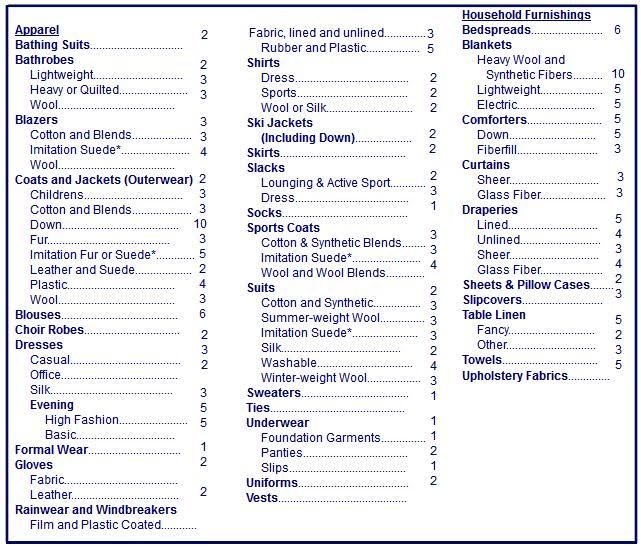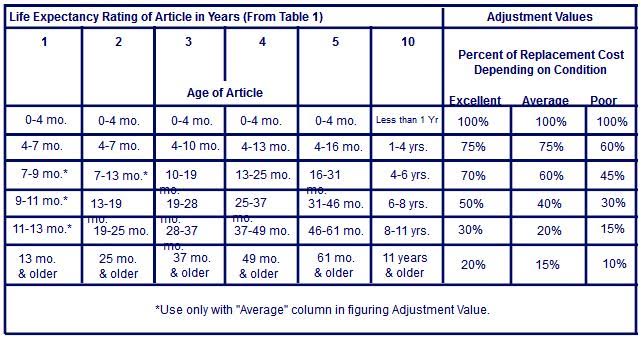Garment Damage & Responsibility
When a garment or other textile article is damaged in use or in the care process, a determination of the cause can sometimes be made because of the obvious nature of the damage. Other times, garment issues are more complex. When a garment does not withstand the care process, it can result from conditions of wear, storage or transport, from defects in manufacturing, or due to neglect in the care process. Once the cause is identified, responsibility can be assigned to the consumer, manufacturer or drycleaner.
The manufacturer is responsible to offer a product that will perform satisfactorily for its normal life expectancy when it is refurbished by the care process specified by the care label instructions. Damage such as severe general color loss and dye bleeding in the care process, shrinkage that makes an item unwearable, color fade from the decomposition of flourescent brighteners, and failure of trim and decorations to withstand the care process are examples of manufacturer responsibility.
The consumer is responsible for damage that occurs during use and home care. This includes failure to follow care instructions, further complicating a stain by using a home remedy such as water or soda, chemical damage from spillage of alcoholic beverages, medications, perfumes, after shaves, hair dyes, perspiration and shrinkage of garments due to improper washing techniques.
The drycleaner is responsible for damage caused by redeposition of soil in the care process, damage due to improper spot removal procedures, holes or tears caused by mechanical means, damage resulting from articles left in pockets and failure to follow care label instructions.
It may be difficult to determine responsibility for some types of damage. In cases where the cause of damage is uncertain, a garment can be examined by laboratory methods to analyze the nature of the damage and the probable responsibility. We pay for third party analysis, and require a release in order to send a garment to the lab. Laboratory Analysis takes between 2-4 weeks for processing. (link to release)
Fair Claims Guide
In the rare event that an item is lost or damaged due to neglect on our behalf, we use the Fair Claims Guide in order to determine the adjusted value of the garment based on replacement cost, age, and condition.
Every textile product has a “life expectancy” according to its intended purpose, material content and the rate of change in fashion or style. Since an article may retain a degree of usefulness beyond the point of life expectancy, it has some residual value for as long as it remains in useful condition; however, this is usually a minimal monetary value. An article that is rendered un-wearable, or worn out, within or beyond its normal life expectancy, has no value and no negotiable basis for adjustment regardless of the nature of the loss or damage. Sentimental value because of personal attachment is subjective and is ruled out as a valid consideration.
Average Life Expectancy of Textile Items in Years
As with life expectancy, age and condition are also taken into consideration in deciding the value of a used textile article at the time of damage or loss. A very worn garment is less valuable than an identical garment of the same age in good condition. A garment also loses value with the passage of time, regardless as to whether or not its owner has obtained fullest use of it.
Claims Adjustment Values Criteria
Here is a step by step method for calculating adjustment value:
- Determine the replacement cost of the article.
- Refer to Table 1 for the type of item and its life expectancy.
- Refer to the appropriate column in Table 2.
- Read down the column to the actual age of the article.
- Read across this line to the adjustment values and choose the value that best describes its condition.
- Multiply this adjustment value by the replacement cost to determine the adjustment amount.
Table 1: Average Life Expectancy of Textile Items in Years

Table 2: Claims Adjustment Values Criteria

**Table 1 & 2 Reprinted with permission from Drycleaning and Laundry Institute (DLI)
***Information adapted with the permission of Dry Clean Dave
